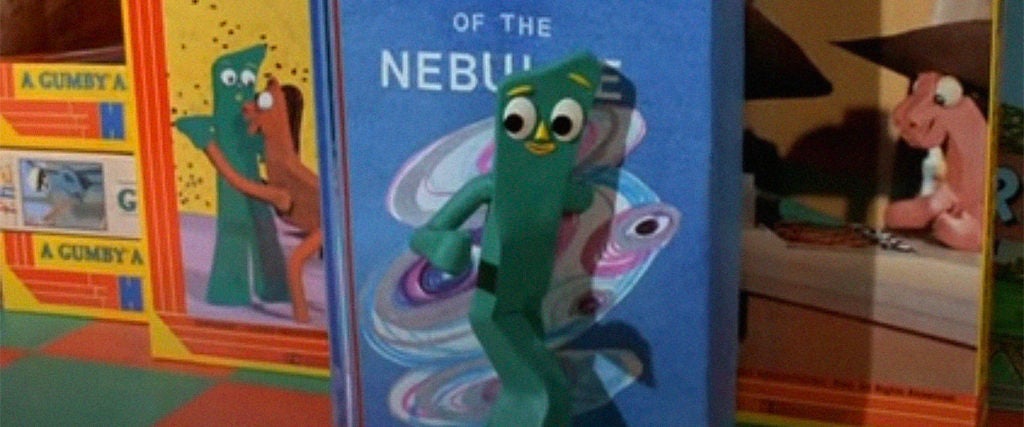In the early 1950s, a USC film school graduate by the name of Art Clokey was messing around with colored clay for a musical stop-motion short film in the vein of Disney’s Fantasia, simply titled Gumbasia. After getting some feedback from movie producer Sam Engel, Clokey evolved his style and molded his green clay slab into a Gingerbread Man-esque character named Gumby. Thus, a timeless legend of the silver screen was born.
Over the second half of the 20th century, Gumby lived a long, rich life in the televisions and imaginations of America. He first appeared in a series of shorts on Howdy Doody starting in 1955, but eventually, he earned his own series, The Adventures of Gumby, which ran from 1957 throughout the entirety of the 1960s. And though his presence wasn’t felt much in the 1970s, the show saw a revival in the 1980s when he appeared in The Gumby Adventures after Eddie Murphy parodied the character as an irritable and aging Jewish star on Saturday Night Live. All of which culminated in the 1995 box office bomb, The Gumby Movie.
It seems we’ve seen the last of Gumby’s onscreen splendor (Clokey was the show’s singular writer and director, and he died in 2010), but he lives on through the @GumbyScreens Twitter account that’s been posting a random screenshot from a Gumby cartoon every hour since August 2020. And while there are plenty of bots on Twitter posting out-of-context stills from popular franchises like Pokémon and Animal Crossing — or shows like Succession or The Sopranos — Gumby Screens still feels noteworthy when you take into account the popularity of the account. It’s got 30,000 followers, which is pretty impressive for a character whose popularity peaked last century. And at least in my circles, we talk about Gumby all the time — he’s both a meme and a main character, an ever-present stretchy guy who truly feels like an old friend.
What is it about him that stretches through time and into our hearts? Nostalgia is obviously part of it. After all, the Gumby cartoons were a pop cultural presence for half a century, existing during the childhood of Boomers, Gen Xers and millennials alike. I’m on the later end of the millennial timeline, but still have fond memories of being firmly planted in front of reruns of the bizarre clay cartoons in my early childhood (perhaps he’s the reason my hair color is that very same shade of green). In fact, I always remember him being there. He was just Gumby.
And though the times have changed, Gumby never has. His adventures have largely retained the same simple, yet surreal formula throughout his run. He was an affable green lad who could change his shape at will and physically travel into any book or story, going on all sorts of escapades in between. His main companion was a talking red horse named Pokey, but along the way, he also gained pals like Prickle, a yellow dinosaur, and Goo, a blue, sea lion-esque mermaid. Their enemies were the always silent Blockheads, who just didn’t seem to like Gumby for some reason. If I had to warrant an educated guess why, it was probably because they were jealous that Gumby was such a cool and popular guy.
Clokey had other shows like the Lutheran Church-funded Davey and Goliath, but with Gumby, he was able to not only popularize claymation, but to creatively push the medium to its full storytelling potential. He recognized a malleability in it beyond the literal, intentionally making Gumby green to keep him racially ambiguous. With Gumby, he could tell any story he could think of where the only limit to his narrative was his own imagination. It was surreal, yet accessible, with some Twitter users even hypothesizing this week that a 1969 short where Gumby steals a pie and ends up in a hellish, red-curtained dream world could have influenced the notorious Black Lodge from David Lynch’s Twin Peaks.
This imaginative malleability was reflected in Gumby too, as he was as comfortable running a pie shop with his friends and starting a band as he was being a brave knight or going to the moon. In a sense, Gumby is simultaneously the ultimate everyman who we all can see ourselves in and an unhindered fantasy we all aspire toward. Either way, he’s still just doing his thing.

